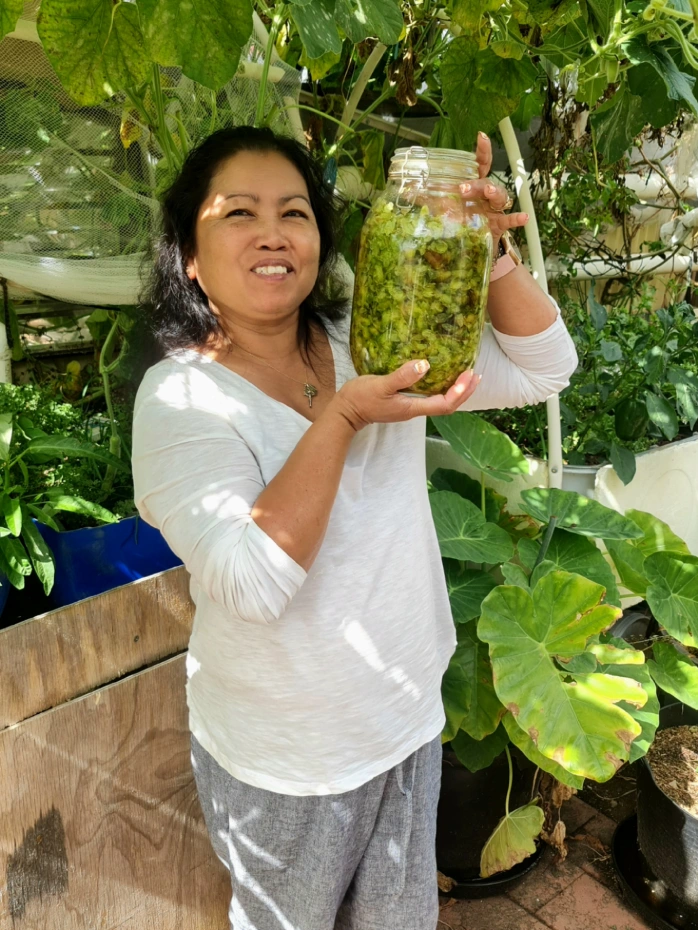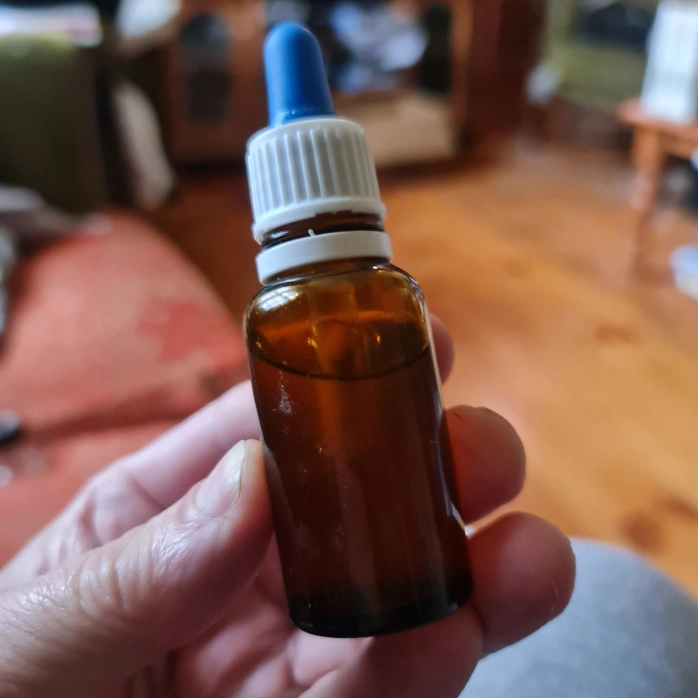Folk tinctures - the easy way to tincture herbs.

The folk method of tincturing is the easiest and probably oldest method of tincturing. It’s the one everyone starts with and some folk stick with it throughout their whole herbal lives.
The other methods that will be covered in this brief series on tincturing are the Ratio Method and the Percolation Method. There are other, more complicated methods but they’re a little beyond the average kitchen herbalist.
The process –
To tincture using the folk method, just follow these instructions. You’ll be surprised at how easy ot is.
- Decide which herb and what strength alcohol you want to use. Cut the herb as finely as possible.
- Grab yourself a good sized jar with a tight fitting lid.
- Put the herb in the jar until the jar is half to two thirds full. By not filling the jar completely, you leave plenty of room for movement during the upcoming shaking stages.
- Cover the herb with alcohol.
- Optional – I like to put the herb and alcohol mix into a blender and give it a blend. This thoroughly mixes both herb and alcohol as well as reduces the size of the pieces of herb, ensuring that the alcohol can penetrate ddper and faster.
- Stir a little to let trapped air bubbles escape.
- Top up the alcohol a little so that it completely covers the herb.
- Put the lid on the jar and shake well.
- Make sure the jar is well sealed and put it in a cool, dark place for a month.
- Shake the jar every day or so or whenever you remember.
- After a month, strain, filter and place into a dark glass bottle for storage. Label well.
Pretty easy hey? Of course, there are minor ways to improve the technique a little but if you do all that’s listed above, you’ll be on the way to making good tinctures.

Why a month?
The month timeframe is pretty flexible. Depending on the herb, the alcohol concentration and the amount of shaking of the jar you do, the tincture can be ready in as little as two weeks.
In the very old days, herbalists made their tinctures on the new Moon and strained and bottled them on the next. Some used different Moon phases but all stuck to a Lunar cycle. The reasons for this is that the Moon has an influence on many aspects of herbalism, so tapping into that good energy is a good idea. It was also a great way to keep time over a long period. Folks didn’t have clocks in the early days, so referring to something as constant as the phases of the moon was the ideal way to keep time.
To learn a little more about using alcohol in herbalism, check out our A Little About Alcohol page on our website.






Congratulations @ligayagardener! You have completed the following achievement on the Hive blockchain And have been rewarded with New badge(s)
Your next target is to reach 1000 posts.
You can view your badges on your board and compare yourself to others in the Ranking
If you no longer want to receive notifications, reply to this comment with the word
STOPTo support your work, I also upvoted your post!
Check out our last posts:
but I'm not a millionaire yet...😂🤣😅
Maybe soon @ligayagardener 😜 Looking forward to you reaching your new target!
I'm not to that stuff, excuse me if I ask what us the use of that "tincture" stuff?
I'm glad you read the post even though you're not into that stuff. Tinctures are alcohol based herbal medicines in which the alcohol is used to extract the beneficial constituents from the herbs and also to preserve the them.
Is it for drinking medicine or external use only?
Either, depends on the herb and the application.
Very educational as always 😊
Happy to share. Please share it around for other folks too.
Hello lovely lady! 😊
Thanks for sharing more of your knowledge with us. I'm enjoying your blog posts! 😊
God bless you and your wonderful family. Have an awesome day my fabulous friend! 😊
All good!